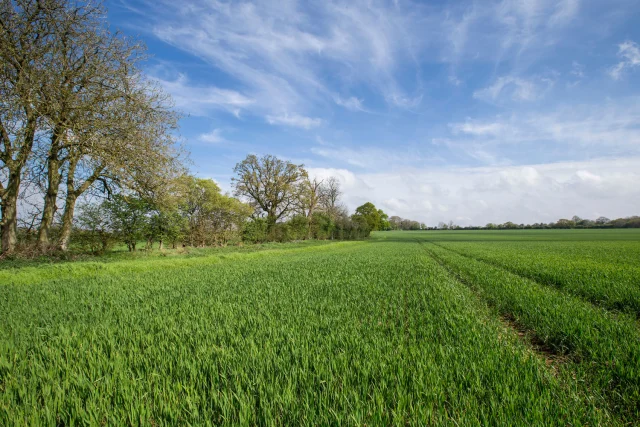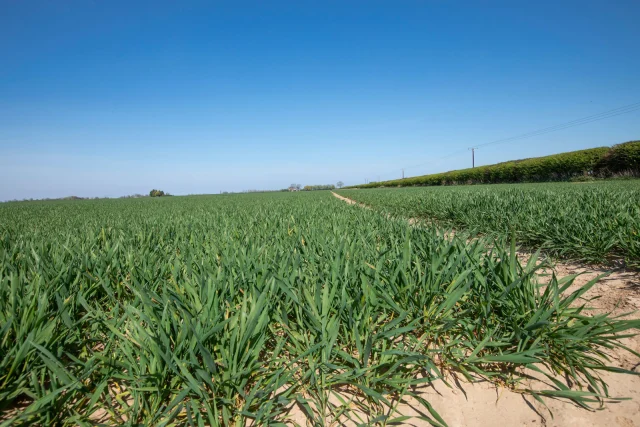Published on 24th January 2022
Local Insights
Three quick pointers for crop agronomy in February in Scotland

Get the latest insight and expert advice for your farm, Craig Simpson outlines three key tasks for Scottish growers in February.
Three quick pointers for crop agronomy in February in Scotland Content
Crop Progress
September drilled wheat is growing well, after a surprisingly mild winter up until mid-January at least. Disease pressure has been low, with just bits of Septoria coming in, but with the mild weather and forward, thicker crops we could expect to see that increase unless we get a colder spell to hold it back.
Oilseed rape was pretty thick going into winter, but pigeons have done a bit of damage here and there, knocking some bits back. Overall it’s looking good as we head through winter.
Craig’s agronomy tips for February
1. Assess weed pressure in winter wheat
One key priority in February will be walking crops to assess weed pressure and the success or otherwise of autumn residual herbicide programmes.
While in Scotland applications of spring contact herbicides tend to be in March or April because of the colder weather, there are sometimes opportunities in February – particularly on bright, sunny days – where there is enough active growth to have good results.
Timing is key, especially for grass weeds, and hitting them earlier when smaller with a mesosulfuron-based product, such as Atlantis OD (mesosulfuron + iodosulfuron) or Pacifica Plus (mesosulfuron + iodosulfuron + amidosulfuron) will help with efficacy if conditions are good and the weeds are actively growing.
Pacifica Plus is the better option where you have mixed grass weed and broadleaf weed populations. It can be used at 0.4 kg/ha from 1 Feb, and then at the higher 0.5 kg/ha rate in March where brome is the target.
If your weed spectrum is annual meadowgrass and broadleaf weeds, products such as Othello and Hamlet (both mesosulfuron + iodosulfuron + diflufenican) are good options.
2. Monitor light leaf spot in oilseed rape using SpotCheck
Phoma, rather than light leaf spot, has been the more prevalent disease in oilseed rape in the autumn, driven by the mild weather. I would expect light leaf spot to increase over the coming months, helped by the microclimate in thicker crops.
With light leaf spot being tricky to identify, not least because it can be in the crop without showing visual symptoms for a time, our SpotCheck service with ADAS is useful to help determine whether crops have been infected. Sign up here to register for a sample kit.
Crops that didn’t receive any autumn fungicide will be most at risk, especially those without good varietal resistance, but all crops should be monitored as even those that were treated in the autumn will likely be running out of protection now.
With high oilseed rape commodity prices, protecting crops will be very worthwhile this season.
If light leaf spot needs treating, Proline (prothioconazole) at around 0.32 L/ha, will cover both light leaf spot and any Phoma.
3. Tidy up overwintered stubbles ahead of spring drilling where appropriate
While many growers in Scotland will have ploughed ahead of spring cropping and rely on that for weed control and seedbed preparation rather than glyphosate, where a more minimum tillage system is being employed, a glyphosate clean up ahead of drilling will be appropriate.
Where glyphosate is being planned, walk stubbles to know what the key target weeds are and tailor rates accordingly to control the most difficult species.
If spring barley crops are drilled in February, a quick reminder that the latest time of application of Liberator (flufenacet + diflufenican) for this crop is pre-emergence at a rate of 0.3 L/ha.



